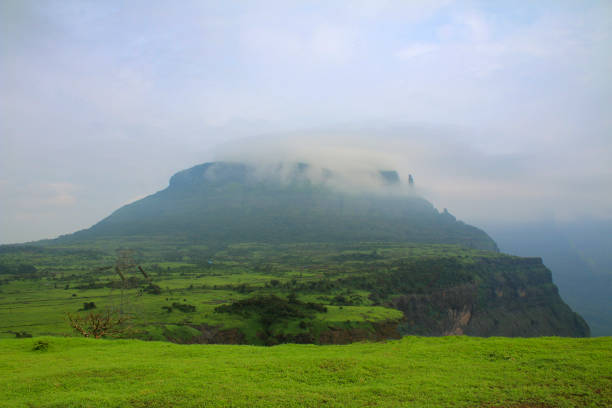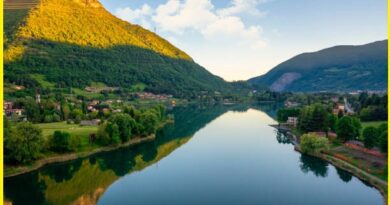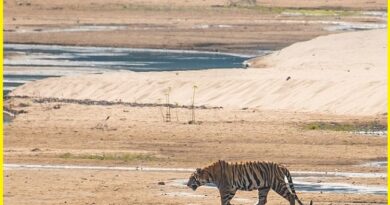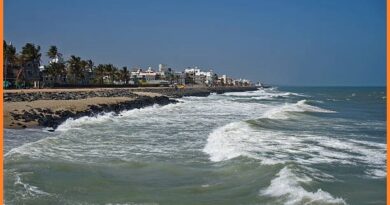Junnar in Maharashtra- The land of Mysterious Caves and lots of Attraction
Junnar Maharashtra
Junnar city is located in the district of Pune in the State of Maharashtra India. The history of this city dates back almost to the first millennium. The fort close to this city, Shivneri Fort is the birthplace of the great Maratha King Chhatrapati Shivaji Maharaj. Junnar also includes a number of beautiful tourist attractions which will surely cast a mystical charm in mind. Some beautiful marvels that can see at Junnar are- The lenyadri girijatmaj temple, Junnar Fort is popular for its majesties and heritage. Junnar Caves and Lenyadri are known for their mysterious artwork and for their series of about 30 rock-cut Buddhist caves.
Geology
Junnar is located in the Western Ghats of Maharashtra and has an average elevation of 689 metres. The geology of Junnar is influenced by the Deccan Trap volcanic plateau, which was formed due to a series of volcanic eruptions that took place millions of years ago.
The Deccan Traps are a large igneous province that covers an area of over 500,000 square kilometers in west-central India. The volcanic activity in the region began about 65 million years ago and continued for about 30,000 years. The lava flows from the volcanic eruptions covered the entire region and formed the Deccan Trap plateau.

The rocks in Junnar are primarily composed of basalt and other volcanic rocks, such as andesite and rhyolite. The basaltic rocks are dark in color and have a fine-grained texture. These rocks are mainly composed of minerals such as pyroxene and plagioclase feldspar. Junnar is also known for its several caves, which were formed due to the weathering and erosion of the basaltic rocks. The caves are primarily composed of basaltic tuffs.
Weather Junnar
The climate of Junnar city is hot semi arid along with tropical wet and dry type. The average temperature of this place ranges in between 20 and 28 degree celsius. The summer months are experienced from the month of March to the month of May. The Rainy season is experienced from the month of June to the month of October and winter season is experienced from the month of November to the month of February.
Places to visit in Junnar
Junnar is a small town in the Pune district of Maharashtra, India. Here are some of the places you can visit in and around Junnar:
Shivneri fort
Shivneri Fort is located in Junnar and it is the birthplace of Chhatrapati Shivaji Maharaj, the founder of the Maratha Empire. The fort is situated at an altitude of 1066 meter above sea level and is one of the most popular tourist destinations in Maharashtra.
The fort is believed to have been built during the 17th century and is known for its architecture, which includes several bastions, gateways, and fortifications. It has a large entrance gate, a mosque, a temple, and several other structures. The fort also has a water supply system that collects rainwater during the monsoon season. Visitors can explore the fort and learn about the history of the Maratha Empire.

Junnar Caves
Junnar Caves, also known as the Junnar Leni Caves, are a group of over 200 rock-cut caves located in the Junnar region of Pune district in Maharashtra, India. The caves are believed to have been built during the 1st and 3rd centuries AD and are divided into three major groups: Tulja Lena, Manmodi Lena, and Shivneri Lena.
The caves were built by Buddhist monks and were used as viharas or residential quarters. The caves are intricately carved and feature sculptures of Buddha, Bodhisattvas, and other Buddhist deities. The caves also have chaitya halls with carved stupas and pillars.
Also read- 5 Things that make ‘Naneghat Maharashtra’ an OMG! Destination
The main attractions of Junnar Caves include Cave 7 at Shivneri Lena, which has a beautifully carved facade and a large hall with 14 pillars, and Cave 35 at Tulja Lena, which has an intricately carved entrance and a large hall with 12 pillars.
Lenyadri Caves
Lenyadri Caves, also known as Ganesh Leni Caves, are a group of rock-cut caves located in the Junnar region. The caves are believed to have been built during the 1st and 3rd centuries AD and are dedicated to Lord Ganesha, one of the most worshipped deities in Hinduism.
There are a total of 30 caves at Lenyadri, out of which 18 are dedicated to Lord Ganesha. The caves are located on a hill and are accessed by climbing 283 steps. The caves are intricately carved and feature sculptures of Ganesha and other Hindu deities. The main attraction of Lenyadri Caves is Cave 7, also known as Girijatmaj Leni, which is the largest and most significant cave. The cave features a 5 meter tall statue of Lord Ganesha in a seated position.

Manmodi Hill
Manmodi Hill is a group of rock-cut caves situated about 3 km from Junnar town and is home to 29 rock-cut caves, which were built between the 2nd century BC and the 3rd century AD.
The Manmodi Hill caves are mainly Buddhist and were used as viharas or residential quarters for monks. The caves are intricately carved and feature sculptures of Buddha, Bodhisattvas, and other Buddhist deities. The caves also have chaitya halls with carved stupas and pillars.
The main attraction of Manmodi Hill is Cave 16, which is also known as Bhimasankar Cave. The cave is famous for its beautiful architecture, which includes a large hall with 12 pillars and a beautifully carved facade.
Naneghat
Naneghat also referred to as Nanaghat is a mountain pass in the Western Ghats range between the Konkan coast and the ancient town of Junnar in the Deccan plateau. The pass is about 120 kilometres north of Pune and about 165 kilometres east of Mumbai. It was part of an ancient trading route, and is famous for a major cave with Sanskrit inscriptions in Brahmi script and Middle Indo-Aryan dialect. The inscriptions have been dated between the 2nd and the 1st century BCE, and are attributed to the Satavahana dynasty era.

Hadsar Fort
Hadsar Fort, also known as Parvatgad Fort, situated at an elevation of about 1,100 meters above sea level and is known for its panoramic views of the surrounding hills and valleys. The main attraction of Hadsar Fort is its trekking trail, which offers breathtaking views of the surrounding hills and valleys. The trek to the fort is moderate and takes about 1-2 hours, depending on the fitness level of the trekker. The trek starts from the base of the hill and passes through dense forests and scenic waterfalls.
Bhimashankar Wildlife Sanctuary
Bhimashankar Wildlife Sanctuary is a protected area covers an area of about 120 square kilometers and is home to a diverse range of flora and fauna. The sanctuary is named after the Bhimashankar Temple, which is located in the sanctuary and is a popular pilgrimage site for Hindus. The sanctuary is known for its lush green forests, scenic waterfalls, and a wide variety of wildlife.
The wildlife in the Bhimashankar Wildlife Sanctuary includes several species of mammals, such as Indian giant squirrels, sloth bears, leopards, and Indian bison. The sanctuary is also home to several species of birds, reptiles, and amphibians.
One of the main attractions of the Bhimashankar Wildlife Sanctuary is the trek to the Bhimashankar Temple. The trek starts from the village of Khandas and passes through dense forests, scenic waterfalls, and steep hills. The trek is moderate and takes about 5-6 hours, depending on the fitness level of the trekker.
The best time to visit is from November to February when the weather is pleasant. It is recommended to carry sufficient water and snacks while trekking in the sanctuary and to follow the rules and regulations of the sanctuary.
Junnar waterfall
Junnar is home to several waterfalls that are popular among tourists and nature enthusiasts. Bhivpuri Waterfall is a seasonal waterfall located near Bhivpuri village in Junnar. The waterfall is best visited during the monsoon season when it is in full flow. Kondeshwar Waterfall is another one located near Kondeshwar Temple in Junnar and is surrounded by lush green forests. The waterfall is a popular picnic spot and is best visited during the monsoon season. some others are-Ozar Waterfall, Pimpalgaon Joga Dam Waterfall.

Visiting waterfalls in Junnar can be a fun and refreshing experience, especially during the monsoon season when the waterfalls are in full flow. It is recommended to wear comfortable clothes and carry sufficient water and snacks while visiting the waterfalls. It is also important to follow safety precautions and avoid swimming in the waterfalls, especially during the monsoon season when the water flow can be strong and dangerous.
Jivdhan Fort
Jivdhan Fort is a hill fort located in the Sahyadri range, near Junnar, is situated at an altitude of around 1028 meter above sea level and is a popular trekking destination for adventure enthusiasts.
The fort is known for its natural beauty, especially during the monsoon season when the entire area turns lush green. It is also known for its historical significance and played a crucial role in the Maratha empire’s history. It was captured by Shivaji Maharaj in the 17th century from the Mughals.

The fort has several attractions for visitors, such as the temple of Lord Shiva, the beautiful architecture of the fort, and the stunning panoramic views from the top. The trek to the fort is challenging but rewarding, with several natural waterfalls and streams en route.
Pune to Junnar
Junnar is located about 95 kilometers from Pune city in Maharashtra, India. The nearest airport to Junnar is the Pune International Airport, which is located about 90 kilometers away. From the airport, you can hire a taxi or take a bus to reach Junnar. There is no direct train connectivity from Pune to Junnar. The nearest railway station is in Pune, which is well-connected to other major cities in India. The most convenient way to travel from Pune to Junnar is by road. You can hire a taxi or take a bus from Pune to Junnar. The journey takes around 2-3 hours, depending on the traffic and the mode of transportation.




Pingback: Shivneri Fort-The Marvel of Indian History where Shivaji was born - Geotourism
Pingback: Exploring the Serene Charms of Ganpatipule- Maharashtra's Coastal Gem - Geotourism